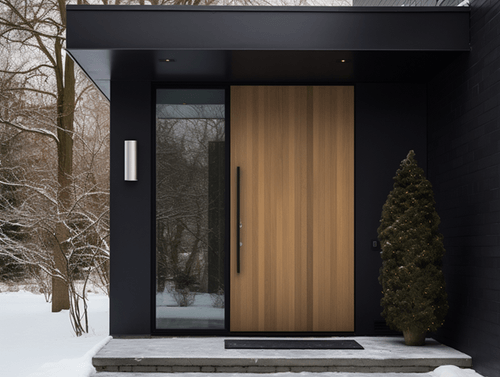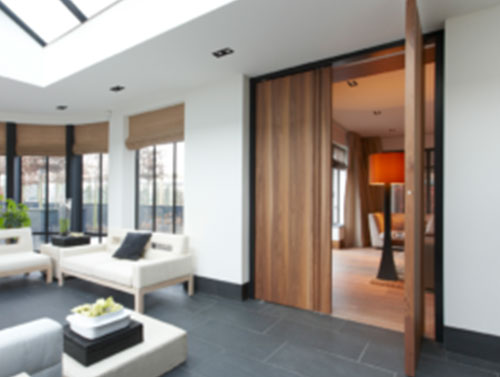Deciding to purchase a new entrance door or new interior doors is no simple task and it often takes great consideration to finalize the price point, quality, material, design, and timing for the project. Nowadays, homeowners and designers can select from a wide variety of material, style, and hardware to create their ideal custom-made doors in a variety of sizes. Unlike as in old homes, today standard sizes are defined for the doors especially when it comes to interior doors. In this article you can learn about the standard door sizes and gain an understanding of door measurements.
What is Standard Door Size

Door sizes in the old homes are anything but standard, but today local building codes often incorporate standardized door sizes for the new built homes. Standard door sizes allow for smooth performance, boost the overall look of the door, and maximize its security. While there are standard sizes defined for the doors, there are many exceptions to the rule. Exterior doors are one of the most common exceptions. For instance, depending on the ceiling height, the front doors can often be quite tall and wider entrances often allow for wider single or double front doors that are custom-made. That being said, every country has its own criteria and specifications about standard door sizes for builders and manufacturers. In this article we will take a look at standard door sizes and specifications in Canada.
Standard Door Size in Canada

Even though Canada has converted to metric system for over fifty years now, there’s still a significant use of imperial system of measurement in some sectors of the economy due to the proximity with the Unites States and the historical ties with Unites Kingdom. Construction industry is one of the sectors that widely uses the imperial system and as such, standard door sizes in Canada are determined in Inches. Standard door sizes apply to height, width, and thickness and depends on the type of the door. Door sizes are described in inches (or feet and inches) and the width is always stated before the length.
Standard Size for Interior Doors

Thickness:
- The standard thickness for interior doors within residential structure is 1 3/4 inches and 1 3/8 inches. However, for solid wood doors, 1 3/4” is the recommended thickness. The added thickness also adds to the security and gives an upgraded feel to the interior design.
Height:
- The standard heights for interior doors are 80”, 84”. 90”, 96” and 108”.
- 80” and 96” are the most commonly used heights with 96” being widely used in new built homes.
- 84” are most seen in older homes.
- 108” or taller are rising in popularity in new modern and luxury homes.
Width:
- The standard width for interior doors is 18” to 36” with 2 inch increments.
- 32” is the most commonly used width for interior doors.
- Widths less than 22” are mostly used in double interior doors.
Standard Size for Pocket and Barn Doors

When it comes to saving space, pocket doors are loved by designers and homeowners. Pocket doors are hung from the top and slide along a track that is mounted inside the wall. When open, the door disappears into a shallow slot inside the wall. Pocket doors can be the perfect solution for tight spaces such as small bedrooms or bathrooms where a hinged door would take up valuable space.
A standard pocket door has the same size as a corresponding hinged door plus 3/4″ or 1” that is added to both the width and height to account for the edges that always remain inside the wall.A barn door is a door that can be installed anywhere in a home, usually featuring a solid wood door hung on a sliding track using barn hardware.
Instead of opening and closing like a hinged door, it slides to the side and hangs nicely against the wall. Designers and homeowners love barn doors because they can easily transform a space and add lots of character to the interior design. Pocket doors are generally larger than hinged doors and the standard barn door has the same size as a corresponding hinged door plus 1” or more (depending on designer’s choice) that is added to both the width and height.
Standard Size for Exterior Doors
Standard size for exterior doors depends on the door type. Below you can find the most common opening sizes for different door types. While there are standard sizes defined for exterior doors, many are exceptions to the rule as designer define custom sizes for the doors.
- Single Door: 44” x 96”
- Single Door with One Sidelight: 55” x 96”
- Single Door with Two Sidelights: 55” x 96”
- Double Door: 80” x 96”
- Double Door with Two Sidelights: 100” x 96”
Custom-Made Doors

A custom door can be made in a variety of styles, elements, materials, and sizes that meet your unique specifications. Installing a custom door can completely transform the look and feel of your space, enhancing your home’s existing design. Tailor-made to your specification, a custom wood door can be used in all areas of your home, both inside and out to complement the interior and exterior design.
One of the major benefits of choosing a custom exterior door is that the door can be created to the exact specifications and sizes you need. If you are replacing an existing door, a custom door allows you to use the existing door jamb.
Additionally, it can reduce the amount of work required for installation and eliminates the need to cut and modify a door that doesn’t fit into the opening. Custom-made entrance doors can be made in large and custom sizes which makes them the perfect choice for grand entryways.
Conclusion
No matter the type, design, and size you’re looking for your front door Arista offers the highest quality options in custom sizes, and a member of our team would be glad to assist you select the perfect door for your home. Contact us today or visit our showroom in North York, Ontario.






